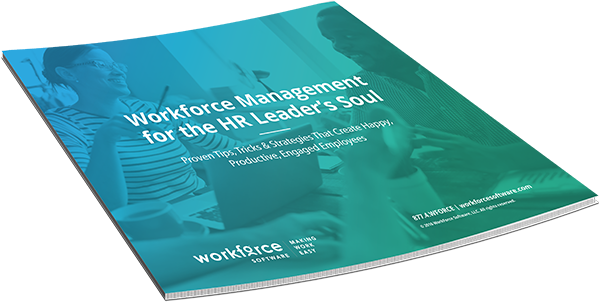Flow: How to Sustain Peak Performance

In college, I played soccer with a friend named Doran. He was a good player, but juggling the ball was his true forte. Doran had touch.
Once, he juggled the ball 3000 times in a row, never letting it hit the ground. He quit the streak willingly. “I gotta catch the bus,” he said.
I was there when he did it, counting in my head along with everyone else. I remember Doran’s focus, his concentration. He had talent, sure, but he was also making an effort. He made missteps, but he always fixed them with a quick shift or stretch.
Doran was in flow.
He was on. In those moments, he was superhuman.
What is flow?
“Flow is an optimal state of consciousness,” writes Steven Kotler, the foremost expert on the subject. “[It’s] a peak state where we both feel and perform at our best.”
Flow can occur anywhere and to anyone. Whether you’re playing soccer or working at your job, flow is the same sensation. It’s brought on by a flood of specific chemicals in the brain.
The mindset is ubiquitous: Do.
According to a 10-year study by McKinsey, which involved thousands of people, “employees are 5X more productive at their peak than they are on average.” Like I said, superhuman.
“Flow might be the most desirable state on earth,” writes Kotler. “It’s also the most elusive.”
In other words, flow is valuable, but rare. Unless you know how to conjure it …
Subscribe to The WorkForce Blog
Learn the art and science of maintaining productive, happy, engaged employees.
4 Psychological Flow Triggers
Neurologically speaking, flow is the product of several brain chemicals being released at once, including norepinephrine, dopamine, and anandamide.
In his book, The Rise of Superman, Kotler highlights 4 psychological triggers proven to spur the chemical reaction that propels people into this productive, ultra-valuable state:
1. “Intensely Focused Attention”
Doran never took his eyes off of the ball.
From focus comes flow.
The longer you stay concentrated—the more norepinephrine and dopamine floods your brain—the easier it gets to maintain that concentration.
How to focus at work:
Humans are hardwired for distraction.
Before civilization, breaking your concentration was a defense mechanism against lurking predators. Today, we still live with these instincts; we’re hypersensitive in uncontrolled environments. Thus, achieving intense focus is less about disciplining yourself and more about controlling your surroundings:
Stay focused by minimizing the distractions around you:
- Wear earplugs
- Turn off your phone
- Isolate yourself in an empty, comfortable room
Your capacity to buckle down is only as good as the space you occupy.
2. “Clear Goals”
Doran was going for a record.
“Know what you’re doing and why you’re doing it—that’s the point,” writes Kotler. “When goals are clear, the mind doesn’t wonder what it has to do next, it already knows.”
Wondering uses too much cognitive energy, which is distracting. Distractions kill flow.
How to set goals at work:
The most achievable goals are specific, defined by clear metrics. For example:
Bad: “My goal is to collect leads at the conference.”
Better: “My goal is to collect 100 leads at the conference.”
Best: “My goal is to collect 25 leads per day, over four days, at the conference.”
Specific goals elicit less stress because they’re more manageable and predictable, making it easy to focus on each task. When it comes to flow, you can’t put a price on focus.
3. “Immediate Feedback”
Doran was energized by a steady stream of ‘Oohs’ and ‘Aahs’ from onlookers.
The satisfaction of immediate feedback fills us with endorphins. Endorphins make us feel good by blocking pain receptors, allowing us to focus harder, longer.
How to provide feedback at work:
Poorly delivered feedback may have the opposite effect, draining the air out of people, tearing them down, stripping them of their confidence and drive.
If you want to promote flow, give feedback in the moment, and make sure it’s:
- Balanced. Stagger your comments: Positive, critical, positive, critical.
- Specific. Ambiguity will promote wonder and thought, which can be distracting if you’re trying to get into a rhythm.
Why should feedback be immediate? Because that’s how the adult brain learns best, in the moment.
 Workforce Management for the HR Leader’s Soul
Workforce Management for the HR Leader’s Soul
This book will help you create a healthy, rewarding environment for the people that keep your company moving forward.
4. “The Challenge/Skills Ratio”
Doran was good, but 3000 juggles is a lot for anyone.
“Flow exists near the midline between boredom and anxiety,” writes Kotler. “If the challenge is too great, fear swamps the system. If the challenge is too easy, we stop paying attention.”
Therefore, to trigger flow, it’s best to be confident in your goal, yet still a tad uncertain you can achieve it.
How to strike motivational balance at work:
Don’t stay stagnant in your role. Always strive for incremental improvement, for growth. In other words, aim to do your job a little bit better each day by setting clear, specific goals. Push yourself.
How much better? According to Kotler, targeting a 4% improvement will help you start flowing (e.g., if you replied to 100 emails in week 1, aim for 104 in week 2). Can’t measure your work with exact precision? No worries …
As long as you feel consistently challenged, you’re probably on track.
The Gist:
Ever get in the zone? You know, a “flow” that keeps you ultra-focused and productive on the task at hand …
We all have. And we all wish we knew how to flow at will, especially at work.
Well, there’s a way.

 Workforce Management for the HR Leader’s Soul
Workforce Management for the HR Leader’s Soul